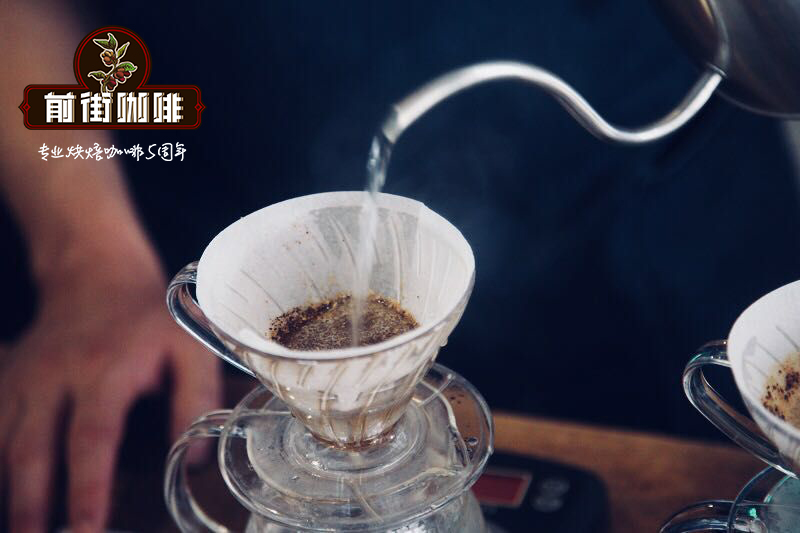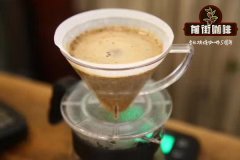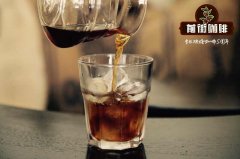El Salvador Santa Maria Coffee House

Professional coffee knowledge exchange more coffee bean information please follow the coffee workshop (Wechat official account cafe_style)
Finca La Reforma and Finca Santa Maria were founded by Rafael Alvarez Lalinde in 1892 on the rich and humid slopes of Mount Santa Ana. Don Raphael (Don Rafael), from Colombia, emigrated to the region with some of the best coffee seeds and began a new legacy of coffee production. Four generations later, his descendants still own and manage the two small neighboring farms-initially part of the farm and later divided into legacies-on the fertile slopes of Mount Santa Ana.
The Alvarez Diaz brothers are the fourth generation to grow coffee in this particular area. Following in their father's footsteps, the two farms have so far grown only red bourbon varieties of coffee, indicating the family's commitment to quality, even in the face of El Salvador's recent fight against coffee leaf rust. Bourbon trees are particularly vulnerable to the disease. The family is experimenting with orange and yellow bourbon, but plans to use only this single variety.
These trees are planted in the shade of natural trees to improve and protect the soil, provide habitat for birds, and are managed according to strict pruning plans to keep trees healthy and improve their resistance to disease and insect damage. Superior planting conditions and commitment to sustainable planting practices helped the family harvest some of the best coffee from the elite areas of El Salvador and then grind it in Santa Ana's state-of-the-art El Borbollon.
El Borbollon mill is managed by Educardo Alvarez (Eduardo Alvarez), whose father (also Educardo) gave him the enthusiasm to grow coffee and inspired him to pursue the highest quality all the time. Under Educardo's guidance, factories are increasingly entering professional markets and providing critical technical assistance and guidance to the farms where they work. In fact, Educardo's hard work and advocacy enabled many farms to participate in the winning Cup. Of the 15 high-altitude farms that El Borbollon works on, 10 have won awards for excellence. Four of them, including La Reforma, won the COE Chairman's Award for a score of more than 90.
Educardo works in factory management activities to supplement the natural potential of coffee produced by him and other farms in the region. All coffee is pulped without water and then fermented for 16-20 hours until it is at its best. Then wash the coffee in clean fresh water to remove all traces of mucus. Parchment coffee is moved to the factory's spacious clay terrace, where it is slowly dried and turned regularly by hand.
In this area, clay patios are traditional, and Educardo prefers them to more modern concrete patios because clay absorbs heat (absorbs heat) and is therefore good at regulating temperature. This method makes the coffee dry slowly (at least 9 to 10 days) and evenly. Educardo's experience shows that the longer the drying time, the better the cup, and the factory has tried to increase the drying time further through partial drying much smaller, and the coffee is placed in an area of the patio that only receives 4 to 5 hours of sunlight a day.
This meticulous attention to detail at every stage of production, from harvest to wet milling and cupping, makes the struggle for family survival suffer in the Salvadoran coffee industry over the past 20 years, and even inspires neighboring farms to invest in the quality of production. According to Educardo, there is no other choice-coffee is "in his blood" and he and his family can never leave it, so it's the only way out. However, as El Salvador's coffee industry and production continue to decline in the face of coffee leaf rust and lack of government support, efforts like his may prove crucial to the survival of some of the most famous coffees offered in Central America. Of course his son thinks so. Educardo Alvarez, 29, who has served as the company's operations manager for the third time in a row, is looking forward to passing the torch to the sixth generation.
The Alvarez family's farms and mills provide a great deal of social support to the local community and have recently worked with local NGOs to help address child malnutrition in rural communities. Families are also committed to developing sustainable practices to protect and preserve the natural environment.
END
Important Notice :
前街咖啡 FrontStreet Coffee has moved to new addredd:
FrontStreet Coffee Address: 315,Donghua East Road,GuangZhou
Tel:020 38364473
- Prev

Salvadoran coffee harvest time what is the taste of Salvadoran coffee by hand
Professional coffee knowledge exchange more coffee bean information please follow the coffee workshop (Wechat official account cafe_style) El Borbollon (Apaneca Ilamatepec)-the El Salvador Alvarez family has grown coffee in El Salvador for more than 100 years and has gone through four generations. Their award-winning farm is located on the lush green hills of Santa Ana in the west of the country.
- Next

Vietnamese coffee introduces which brand of Vietnamese coffee is better? how about Vietnamese coffee?
Professional Coffee knowledge Exchange more coffee bean information Please follow Coffee Workshop (Wechat official account cafe_style) Merkanta is pleased to be the first, if not the only professional coffee importer to provide high quality, professional micro batches from Vietnam. Starting in 2015, this is a new starting point for us, and we are proud to be in a region with great potential for the future.
Related
- Beginners will see the "Coffee pull flower" guide!
- What is the difference between ice blog purified milk and ordinary milk coffee?
- Why is the Philippines the largest producer of crops in Liberia?
- For coffee extraction, should the fine powder be retained?
- How does extracted espresso fill pressed powder? How much strength does it take to press the powder?
- How to make jasmine cold extract coffee? Is the jasmine + latte good?
- Will this little toy really make the coffee taste better? How does Lily Drip affect coffee extraction?
- Will the action of slapping the filter cup also affect coffee extraction?
- What's the difference between powder-to-water ratio and powder-to-liquid ratio?
- What is the Ethiopian local species? What does it have to do with Heirloom native species?

